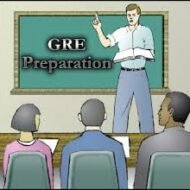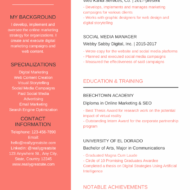Posted by Managementguru in E Sale Point
on May 2nd, 2014 | 0 comments

This PDF on GRE verbal / vocabulary enlightens you with almost all ‘A’ series words covered. Given in the form of posters for your easy understanding and practice, it will definitely serve as a ready reckoner whenever needed. Planning to release the next PDF on ‘B’ series again with the complete list of words that’ve appeared in the past GRE papers. Lilting tips to crack GRE verbal… Learning Vocabulary can be Fun – Your vocabulary is absolutely vital to mastering the verbal section of the GRE test. One part of this will include the Sentence Completion section, which makes up about a quarter of your overall score. You also improve GRE vocabulary through talking. When you talk to somebody your mind is more alert than when you are studying alone. That is because you are using two senses instead of one. FOLLOW THIS LINK TO BUY THE INEVITABLE GUIDE AND CRACK GRE GRE Vocabulary Guide – Top 120 Words in ‘A’...

Posted by Managementguru in E Sale Point
on May 1st, 2014 | 0 comments

Buy One Get One Free… Buy One Presentation and Get One Absolutely Free Pay the price to understand accounting basics and get free resource material on accounting conventions… What is “What you possess” and Who is “Who is liable”. We have given you the accounting basics in the simplest manner to understand and execute. Accounting becomes a cake-walk when you place the right elements at the right places for which you need to be have a grip on the basics. Along with this, you are entitled for a free presentation on “Accounting Conventions and Concepts” which outlines the three fundamental conventions of accounting namely, Convention of consistency, Convention of full disclosure and Convention of conservatism. We assure you will be benefited with these presentations… Follow the link to download the product …. PPT on Basics of Accounting and Free Resource Material on Accounting Conventions…...

Posted by Managementguru in Video Lecturers
on Apr 20th, 2014 | 0 comments

Strategic Management Video Lecture by David Kryscynski This is the introduction lecture for Strategic Management. Very Innovative and Informative video. A List of Strategic Management Terms Business – A strategy that pertains to single departments or units within a company.Combination – A type of grand strategy that employs several different grand strategies at once.Concentration – A growth strategy that extends the sale of current products or services to a company’s current market.Differentiation – A business strategy that strives to make the company’s product or service unique.Diversification – A growth strategy that moves a company into a similar kind of business with new or different products or services.Divestiture – A type of defensive strategy in which a company sells some part of its business, often an unprofitable part.Evaluating – The process of continuously monitoring the company’s progress toward its long-range goals and mission.Focus – A business strategy that directs marketing and sales towards a small segment of the market.Formal – The type of planning that involves systematic studying of an issue and the preparation of a written document to deal with the problem.Formulating strategy – Developing the grand- and business-level strategies to be used by the company.Functional – A strategy which involves short-range operational plans which support business strategies by emphasizing practical implementation.Goal – A concise statement that provides direction for employees and set standards for achieving the company’s strategic planGrand – A type of strategy that provides overall direction for the company.Growth – A type of grand strategy developed when a company tries to expand sales, products, or number of employees.Implementing – Putting a strategy to work after it has been formulated.Intermediate – Covers the time span between short-range and long-range, usually 1-3 years or 1-5 yearsLiquidation – A type of defensive strategy in which the entire company is sold or dissolved.Long Term– A three-to-five year period of time, but possibly as far as 20 years into the future.Mission Statement – A brief summary explaining why a company exists.Operational – Short-range planning that focuses on forming ideas for dealing with specific functions in the company.Overall Cost Leadership – A business strategy that is designed to produce and deliver a product or service for a lower cost than the competition.Planning – The process that businesses use to decide the company’s goals for the future and the ways to achieve those goals.Policy – A broad general guide to action that establishes boundaries within which employees must operate.Procedure – A detailed series of related steps of tasks written to implement a policy.Retrenchment – A type of strategy that aims to reverse negative trends in a company, such as losses in sales.Rule – A specific and definite corporate action that employees must follow.Short Term– A one-year period of time.Stability – A type of strategy that aims to keep the company operating at the same level that it has for several years.Strategic – Long-range planning done by the highest management levels in the company.Strategic Management – The application of the basic planning process at the highest levels of the company.Strategy – An outline of the basic steps management is going to take to achieve a goal.SWOT Analysis – The most utilized process for determining a company’s overall health; it involves analyzing internal strengths, internal weaknesses, external opportunities, and external threats.Turnaround – A type of defensive strategy that is used to regain success.Vertical Integration – A growth strategy that moves a company into a market it previously served either as a supplier or as a customer. Take The Test to Check Your Strategic...

Posted by Managementguru in Resume Samples, Video Lecturers
on Apr 19th, 2014 | 0 comments

Creative Resume Writing A creative resume is a powerful tool that allows you to showcase your unique skills, experiences, and personality in a visually appealing and memorable way. By breaking away from the traditional format, you can captivate potential employers and stand out from the competition. To create a creative resume, begin by identifying your key strengths and achievements, then brainstorm creative ways to present them visually. Consider incorporating elements like color, graphics, and typography that align with your personal brand. Additionally, focus on crafting a compelling narrative that highlights your passion and demonstrates your suitability for the desired role. Have a look at the following resume. It sounds very professional and has all the necessary skills outlined and highlighted in a crisp manner. This is how your resume should be. Tips to Write a Creative Resume Think like the employer Understand what the employer wants and customize your information to address those requirements specifically. Choose a basic font Go for a 11 or 12 font size and use Arial or Times New Roman, that will give a professional look and also legible. Write a custom resume for every job When applying for jobs that are a perfect match for your qualifications and experience. No picture please If the company wants to see your face they shall very well visit your LinkedIn Profile. Review resume examples before you start Before you start work on writing or updating your resume, review resume examples that fit a variety of employment situations. Alternatively take a look at this creative resume. The candidate is a model, so featuring her profile with a photo becomes inevitable. Tricks to Impress Your Employer Keep it clean A recruiter or hiring manager may only see your resume for 15 to 30 seconds, so don’t give them a second thought. Create Social Proof When a potential employer googles your name, they must understand what other think of you. Get feedback from employers If the employer agrees to give you feedback, he most probably will accept your request for a visit to the office. Associate with big brands By associating yourself with the right kind of people and brands, you will develop the kind of authority that will stand out to employers. Show off why you are a perfect fit for the role Organize and customize your resume to highlight your transferable skills and experience, so they can tell in 10 seconds that you are qualified. Resume writing need not be a scary thing, because who will better understand yourself other than you? Note: All the names and positions, company names given in the resume are...









